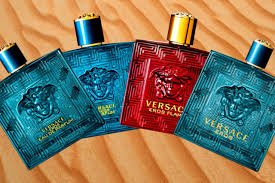
is native shampoo good
Understanding Native Shampoo and Its Rise in Popularity
Native Shampoo has quickly become a well-known brand in the hair care industry, especially among people who prefer products with simpler ingredient lists and fewer synthetic additives. It’s part of a broader movement toward clean beauty, where consumers demand transparency, sustainability, and products free from potentially harmful chemicals. Native started with deodorants but expanded into personal care items like shampoos, conditioners, and body washes. Their shampoos claim to be free of sulfates, parabens, silicones, and dyes, catering to individuals who are sensitive to harsh detergents or who simply prefer a gentler cleansing option.
Key Ingredients in Native Shampoo
One of the brand’s biggest selling points is its ingredient transparency. Native shampoos often feature plant-derived cleansers and conditioning agents instead of the more aggressive detergents found in many mainstream shampoos. Common ingredients include:
- Coconut-derived surfactants – These cleanse the hair without excessive stripping of natural oils.
- Glycerin – Acts as a humectant, drawing moisture into the hair shaft.
- Citric acid – Helps balance pH, making the formula gentler for the scalp.
- Fragrance from natural and synthetic sources – Used for signature scents like Cucumber & Mint, Almond & Shea Butter, or Coconut & Vanilla.
- Essential oils – In certain variants, for both scent and potential scalp benefits.
By excluding sulfates and parabens, Native aims to be a safer option for daily use, especially for color-treated or naturally dry hair.
Benefits of Using Native Shampoo
Consumers are drawn to Native shampoo for several reasons:
- Gentle Formulation – It’s designed to cleanse without overly stripping natural oils, making it suitable for people with dry or sensitive scalps.
- Color-Safe – The absence of harsh sulfates helps reduce fading for dyed hair.
- Pleasant Fragrances – Many users enjoy the fresh, light scents that linger without being overpowering.
- Cruelty-Free – Native is known for not testing on animals, appealing to ethically conscious buyers.
- Transparency – Clear labeling helps customers make informed choices about what they’re putting in their hair.
Potential Drawbacks of Native Shampoo
Despite the positives, Native shampoo may not be perfect for everyone. Some users have reported:
- Buildup Over Time – Sulfate-free formulas can sometimes leave residue, especially for those with oily hair or who use many styling products.
- Price Point – It’s generally more expensive than basic drugstore shampoos, which can be a concern for budget-conscious shoppers.
- Fragrance Sensitivity – While the scents are natural-inspired, they can still trigger reactions in those who are highly sensitive to fragrances.
- Not Always Deep-Cleansing – People with very oily hair or heavy product buildup may feel it’s not strong enough for occasional deep cleansing.
Comparing Native Shampoo to Other Sulfate-Free Brands
The sulfate-free shampoo market is crowded, with competitors like SheaMoisture, OGX, and Briogeo offering similar promises. Native’s advantage is its minimalist ingredient list and branding focused on clean living. However, some competitors incorporate more advanced botanical blends or targeted formulas for specific hair concerns like frizz control or volumizing. In terms of price, Native sits in the mid-range—more expensive than basic drugstore brands but cheaper than salon-level options. Its performance tends to appeal most to those looking for gentle, everyday cleansing rather than intensive treatment.
Hair Types That Benefit Most from Native Shampoo
Native shampoo is generally best suited for:
- Normal to Dry Hair – The gentle cleansing helps maintain natural moisture.
- Color-Treated Hair – Sulfate-free formulas help preserve color vibrancy.
- Sensitive Scalps – Minimal harsh chemicals can reduce irritation.
- Wavy or Curly Hair – Many curly-haired users appreciate the moisture-retaining properties.
On the other hand, people with very oily hair or fine, limp strands may prefer to use Native shampoo less frequently or alternate it with a clarifying formula for balance.
User Reviews and Real-World Experiences
Customer feedback is mixed but leans positive. Many reviewers praise the soft, smooth feel their hair has after washing, along with the appealing fragrances. They also note that their hair feels less frizzy and more manageable over time. However, some report that after several weeks, their hair begins to feel weighed down due to mild buildup, requiring a switch to a clarifying shampoo once or twice a month. According to Allure, Native’s approach to ingredient simplicity aligns with the growing clean-beauty trend, but results will vary based on individual hair type.
Environmental and Ethical Considerations
Native emphasizes eco-consciousness in its branding. The brand offers recyclable packaging and markets itself as cruelty-free. While not all ingredients are organic, many are naturally derived, and the company avoids controversial chemicals linked to environmental damage. Sustainability-minded consumers appreciate these efforts, though some wish for refill options or even more biodegradable packaging solutions.
How to Use Native Shampoo for Best Results
To get the most from Native shampoo, consider the following tips:
- Wet hair thoroughly before applying to ensure even distribution.
- Use a small amount and lather gently at the scalp, letting the suds run down the hair shaft.
- Rinse thoroughly to avoid any residue that could lead to buildup.
- Pair with a lightweight conditioner if you have dry ends, but avoid heavy conditioners if your hair tends to get oily.
- Incorporate a clarifying shampoo once or twice a month if you notice heaviness or lack of volume.
Expert Opinions on Native Shampoo’s Effectiveness
Hair care professionals often agree that sulfate-free shampoos like Native can be beneficial for many people, particularly those seeking a milder cleansing experience. However, stylists sometimes recommend alternating with a deeper cleanser to keep hair fresh and free of product residue. As per Byrdie, the main value of Native shampoo lies in its simplicity—it avoids unnecessary additives but also doesn’t include many advanced treatment ingredients, making it a straightforward, gentle choice.
Final Verdict: Is Native Shampoo Good?
Overall, Native shampoo is a solid option for those prioritizing gentle, sulfate-free cleansing, pleasant scents, and a more transparent ingredient list. It works particularly well for normal to dry hair, color-treated hair, and anyone with a sensitive scalp. Its ethical stance and recyclable packaging also make it appealing for eco-conscious consumers. However, it may not satisfy those with very oily hair, heavy buildup, or specific treatment needs. Like most hair care products, its effectiveness depends largely on individual hair type and routine. For many users, Native shampoo delivers on its promises, making it a worthwhile try—especially if you’re moving toward cleaner, more mindful personal care.






